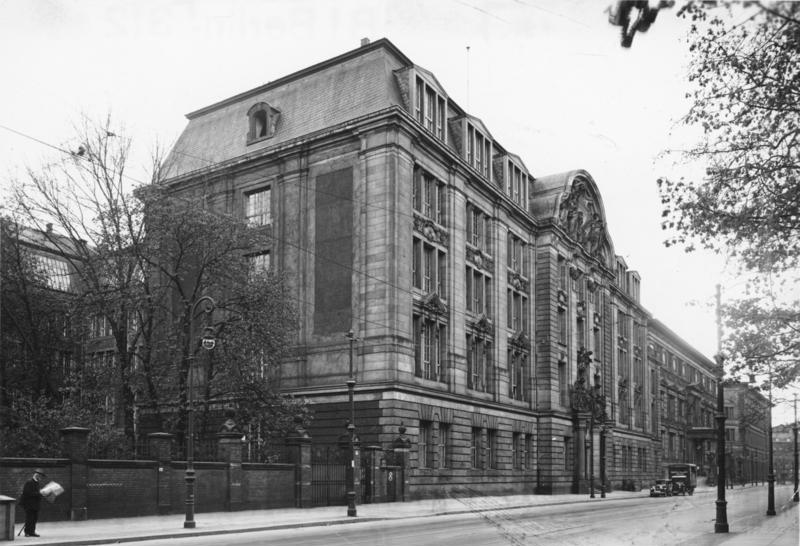
The only realistic depiction of who Gestapo detectives (yes, they were mostly detectives as Gestapo was a police force) really were and how they really worked could be found in (surprise, surprise) German movie “Sophie Scholl – The Final Days” (Sophie Scholl – Die letzten Tage) released in 2005.
Everything else (fiction and even non-fiction books, feature and documentary movies) are pretty much fairy tales of dark horror variety. The reality was that The Third Reich was by no means a dictatorship maintained by force or terror or coercion or intimidation or propaganda or even “all of the above”.
Instead, he Nazi leadership developed an almost fearful preoccupation with the mood of the population, which they monitored carefully (mostly via the efforts of SD-Inland – the domestic intelligence service), devoting considerable energy and resources toward satisfying the needs of Germans, often to the detriment of the country’s rearmament program.
And even the war effort – it is the undisputable fact that Germany was the last major belligerent nation that switched its economy into a “total war” mode (a colossal blunder which contributed significantly to the defeat in World War II and the demise of the Third Reich).
With the level of support for the Nazi government and personally Adolf Hitler exceeding 90% there was simply no need to subject the overwhelming majority of Germans to surveillance or intimidation (let alone preventive detention).
Consequently, it is no surprise that while Communist East Germany would later employ 190,000 (!) official surveillance experts and an equal number of “unofficial collaborators” to watch over a populace of 17 million (just over 11 official and 11 unofficial employees per 1,000 individuals), the whole Nazi Gestapo in 1937 had just over 7,000 employees (including clerical workers and secretarial staff) to keep tabs on more than 60 million people (0.12 per 1,000 or 100 times less).
Gestapo informers were also not nearly as numerous as is commonly believed. For example, Gestapo office in Saarbrücken had only fifty full-term informers in 1939. Its District Office in Nuremberg, which had the responsibility for all of northern Bavaria, employed less than a hundred regular informers between 1943 and 1945 (i.e. even during the war when opposition to the regime was far more dangerous than in peacetime).
Hence, Gestapo was actually a very small agency compared to Stasi, NKVD/MGB/KGB or similar organizations in Eastern Europe, China, Cuba, North Korea, Vietnam or other Communist countries.
And its activities rarely touched the lives of most ordinary Germans (who honestly and wholeheartedly supported their Führer and his regime). Thus the latter had no reason at all to fear that organization. And they actually didn’t, viewing Gestapo as their friend and protector from their enemies – not a foe.
Contrary to very popular misconception, propagated by fiction books and novels and propaganda non-fiction, it did not. In its basic objectives and functions, Gestapo (not-so-Secret State Police) was a typical political police force. Its primary objective (raison d’être) was to investigate political crimes (crimes against the Nazi state), identify the perpetrators of these crimes and hand them to the prosecutors to be prosecuted and subsequently tried in Nazi courts (e.g. the infamous “People’s Court”).
Contrary to the popular misconception, Nazi legal system did follow rules and procedures required by the “due process”. Consequently, the fundamental objective of any Gestapo investigation was to collect enough evidence (e.g. information) that the individual in question did, indeed, commit the political crime in question.
Sufficient for the prosecution to bring this individual to a Nazi court and for the court to convict him (or her). Unlike the Soviet GPU/NKVD/MGB (which, though also being a political police, had a fundamentally different objective), Gestapo did not consider confession a sufficient reason to convict the individual in question.
Neither did the Nazi prosecution (or the courts for that matter). They needed hard evidence. Which is simply impossible to obtain by torturing the suspect, because the latter will say literally anything to stop the pain. In other words, provide investigators with totally irrelevant, misleading or simply false information which will take lots of man-hours to investigate and confirm.
Consequently, in reality Gestapo relied mostly on good old police investigation and interrogation techniques (it was first and foremost the police). Which is not surprising because initially (i.e. before the war) it was staffed with career policemen known not for their Nazi credentials (in most cases they were not even members of Nazi party), but for their professional competence.
Gestapo was also not nearly as powerful as is commonly believed – by law it was prohibited from spying on Wehrmacht personnel. Consequently, while it was relatively successful in dealing with small civilian resistance groups (i.e. The White Rose) and even spy rings such as “Rote Kapelle” (“The Red Orchestra” – the anti-Nazi group run by the Soviet GRU foreign intelligence service), it was powerless to even uncover (let alone prevent) military coup attempts in 1938 and 1944 and assassination attempts on Hitler in 1943.